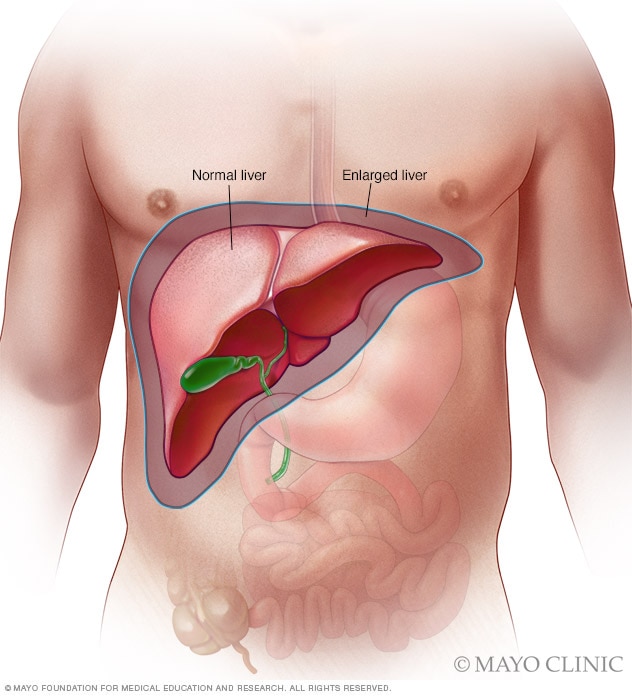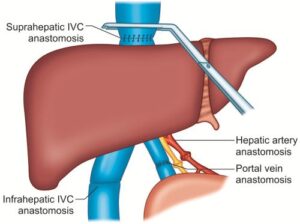
Understanding Hepatomegaly: Causes & Cures
Hepatomegaly,, can be a concerning health condition indicating underlying issues. Nestled in the upper right abdominal quadrant, the liver plays a pivotal role in the body’s digestive and metabolic processes, including bile production, detoxification, and fat metabolism. When the liver enlarges beyond its normal size, it signals potential health complications.
While not a disease itself, an enlarged liver serves as a critical symptom of various underlying conditions, ranging from liver diseases to heart failure or cancer. Understanding the symptoms, causes, and treatment options is essential for effective management and improved health outcomes.
Symptoms of an Enlarged Liver
In the realm of medical mysteries, the tale of hepatomegaly unfolds with a myriad of clues, each whispering secrets of the liver’s plight. While some souls may cloak their distress in silence, the astute observer knows to listen keenly for the subtle murmurs of abdominal discomfort, the weary sighs of fatigue, the unsettling waves of nausea, and the telltale hue of jaundice. These are the harbingers, the cryptic signs that beckon us to unravel the enigma veiled within the liver’s cavernous depths.
Thus, let us embark upon this noble quest with resolve and vigilance, for the journey ahead is fraught with peril and promise alike. Armed with knowledge and intuition, we shall navigate the labyrinth of hepatomegaly, unveiling its secrets one symptom at a time. And in our pursuit of understanding, we shall illuminate the path to healing, guiding our patients toward the dawn of restored health and vitality.
- Abdominal Pain: Pain or discomfort in the upper right quadrant of the abdomen is a common symptom of an enlarged liver. This pain may be dull, aching, or sharp and may worsen after eating;
- Fatigue: Feeling excessively tired or lacking energy can be a symptom of liver enlargement, especially if it’s due to conditions like hepatitis or liver cirrhosis;
- Swelling: Swelling in the abdomen, also known as ascites, may occur due to fluid buildup caused by liver disease;
- Jaundice: Yellowing of the skin and eyes due to increased levels of bilirubin in the blood is a common symptom of liver problems;
- Nausea and Vomiting: Some individuals with an enlarged liver may experience nausea and vomiting, especially if the underlying cause is related to liver dysfunction;
- Loss of Appetite: A decreased appetite or feeling full quickly after eating small amounts of food can occur with liver enlargement;
- Weight Loss: Unintended weight loss can be a symptom of various liver conditions, including liver cancer or advanced liver disease;
- Enlarged Spleen: In some cases, an enlarged liver may be accompanied by an enlarged spleen (splenomegaly);
- Fluid Retention: Swelling in the legs and ankles (edema) due to fluid retention can occur as a result of liver dysfunction;
- Discomfort or Fullness: Some people with an enlarged liver may feel a sense of discomfort or fullness in the upper abdomen.
It’s important to note that many of these symptoms can be indicative of other health issues as well. If you’re experiencing any of these symptoms, especially if they persist or worsen over time, it’s important to seek medical attention for proper diagnosis and treatment.
Causes of Hepatomegaly
The causes of an enlarged liver are diverse and multifaceted. Liver disorders such as cirrhosis, hepatitis, or fatty liver disease, whether alcohol-related or non-alcoholic, can contribute to hepatomegaly. Additionally, genetic conditions, infections, certain medications, and cancers originating in the liver or spreading from other parts of the body may also lead to liver enlargement. Understanding these underlying factors is crucial for devising appropriate treatment strategies
Risk Factors Associated with Liver Enlargement
Liver enlargement, also known as hepatomegaly, can stem from various factors, posing risks to health. These factors include:
- Alcohol Abuse: Consistent alcohol consumption can lead to alcoholic liver disease, prompting conditions like fatty liver, hepatitis, and cirrhosis, which contribute to liver enlargement;
- Non-Alcoholic Fatty Liver Disease (NAFLD): Characterized by excessive fat buildup in the liver, NAFLD often accompanies obesity, insulin resistance, type 2 diabetes, high cholesterol, and metabolic syndrome, all of which elevate the risk of hepatomegaly;
- Viral Hepatitis: Chronic infections with hepatitis B virus (HBV) and hepatitis C virus (HCV) cause liver inflammation and damage, leading to hepatomegaly;
- Autoimmune Hepatitis: This condition occurs when the body’s immune system mistakenly attacks the liver, triggering inflammation and subsequent liver enlargement;
- Cirrhosis: Advanced liver disease marked by liver tissue scarring. Cirrhosis can develop from chronic alcohol abuse, viral hepatitis, autoimmune hepatitis, and other causes, culminating in liver enlargement as the disease progresses;
- Hemochromatosis: An inherited disorder resulting in excessive iron accumulation throughout the body, including the liver, leading to liver damage and enlargement;
- Wilson’s Disease: Another genetic disorder causing copper accumulation in various organs, including the liver, resulting in liver enlargement and dysfunction;
- Liver Cancer: Both primary liver cancer and metastatic liver cancer can cause hepatomegaly;
- Heart Failure: Congestive heart failure disrupts effective blood pumping, leading to liver congestion and subsequent enlargement;
- Hepatic Vein Obstruction: Conditions like Budd-Chiari syndrome impede blood flow out of the liver, causing liver enlargement;
- Medications and Toxins: Certain drugs such as methotrexate and isoniazid, along with exposure to toxins like specific chemicals or mushrooms, can induce liver damage and enlargement;
- Infections: Infections like mononucleosis (caused by the Epstein-Barr virus) or cytomegalovirus can contribute to hepatomegaly.
It’s crucial to recognize that liver enlargement may indicate serious underlying conditions and warrants evaluation by a healthcare professional for accurate diagnosis and management. Treatment approaches depend on identifying and addressing the root cause.
Conclusion
In the vast tapestry of human health, the swollen silhouette of an enlarged liver looms as a harbinger of potential peril. From the benign whispers of minor maladies to the thunderous warnings of grave liver diseases, its presence demands attention and respect. To heed the call of hepatomegaly is to embark upon a journey of vigilance and understanding, where the recognition of subtle cues holds the key to timely intervention and healing.
In the labyrinth of bodily sensations, where whispers of discomfort mingle with echoes of distress, lies the breadcrumb trail to diagnosis. Abdominal pain, a nagging reminder of the liver’s burden. Fatigue, the weight of illness dragging upon the spirit. Jaundice, a golden hue betraying the body’s struggle within. These are the clues, the subtle signals that beckon us to unravel the mystery of liver enlargement and chart a course towards restoration.
But fear not, for in the crucible of awareness lies the power to reshape destiny. By heeding the body’s call and seeking the counsel of medical wisdom, we pave the path to early detection and effective management of liver-related disorders. Through the alchemy of proactive intervention and diligent care, we can shepherd our patients towards the shores of well-being and the promise of a life lived in fullness.
So let us stand as sentinels of health, ever vigilant in our quest to decipher the language of the body and unlock the secrets of its silent struggles. For in the pursuit of knowledge and compassion lies the promise of healing, and the boundless potential to shape a future of vitality and joy.

